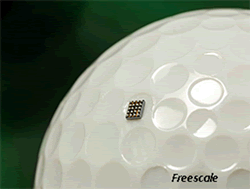2014 Connector Technology Review
The connector industry grew in 2014, and that was a result of both evolving product lines and cutting-edge technology. Here, Bob Hult looks back at the year’s trends and products in the annual 2014 Connector Technology Review.
Shrinking the size of electronic devices has always been a given in the world of electronic equipment. The burgeoning growth of the Internet of Things (IoT) is blowing the doors off the race to unbelievably small yet powerful chips that are enabling an entirely new generation of products.
Freescale Semiconductor, for example, announced a new 32-bit microcontroller aimed specifically at IoT applications and changing expectations for what is possible.
The continuing miniaturization of electronic devices is changing the way they are packaged and, specifically, how internal and external interconnects are achieved. Requirements for internal separable interfaces of a smartwatch may come down to a battery socket, while external links are wireless.
At the other end of the spectrum, large data systems continue to push data rates to ever-higher levels. Demand for faster transfer rates continues to fuel development and refinement of high-performance backplane and I/O connectors. Systems operating at up to 25Gb/s are becoming more common as engineers find ways to extend the practical use of copper interconnects.
Development and support of high-performance backplane connectors requires extensive financial and technical resource commitments, which has limited the industry to relatively few leading connector manufacturers. A core requirement for participation in this market is the availability of extensive signal integrity resources to both assist in the development of new interfaces as well as support customers in the selection and design-in process.
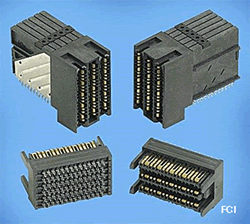 Samtec has offered several high-speed connector families that could be used in backplane applications but officially entered the high-end backplane connector market with its announcement of a new strategic partnership with FCI Electronics. A licensing agreement allows Samtec to manufacture, market, and sell FCI’s ExaMAX high-speed connector product family. ExaMAX is designed to support 25Gb/s signaling with a migration path to 40Gb/s.
Samtec has offered several high-speed connector families that could be used in backplane applications but officially entered the high-end backplane connector market with its announcement of a new strategic partnership with FCI Electronics. A licensing agreement allows Samtec to manufacture, market, and sell FCI’s ExaMAX high-speed connector product family. ExaMAX is designed to support 25Gb/s signaling with a migration path to 40Gb/s.
The architecture of traditional backplane systems continues to evolve as alternatives such as ruggedized, midplane, orthogonal midplane, orthogonal direct, and twinaxial cable configurations are evaluated to address the speed, reliability, and reach limitations of copper.
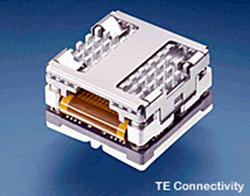 At the same time, leading connector manufacturers are hedging their bets by expanding their portfolios of fiber optic alternatives. FCI, Molex, and TE Connectivity joined Samtec in introducing mid-board optical engines with performance of up to 25Gb/s per channel. These devices can take up to 300Gb/s off a daughtercard and bring the signal through the front panel with a connector that is just a fraction of the size of a conventional copper interface. Major advances in power reduction and performance are closing the economic gap between copper and fiber interfaces. These transceivers may have a separable interface or be pigtailed to a cable assembly terminated with an MPO or expanded beam connector.
At the same time, leading connector manufacturers are hedging their bets by expanding their portfolios of fiber optic alternatives. FCI, Molex, and TE Connectivity joined Samtec in introducing mid-board optical engines with performance of up to 25Gb/s per channel. These devices can take up to 300Gb/s off a daughtercard and bring the signal through the front panel with a connector that is just a fraction of the size of a conventional copper interface. Major advances in power reduction and performance are closing the economic gap between copper and fiber interfaces. These transceivers may have a separable interface or be pigtailed to a cable assembly terminated with an MPO or expanded beam connector.
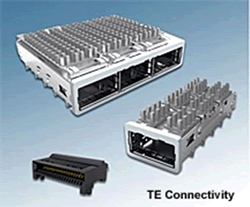 The I/O panel has become the battleground for interfaces that feature increased data throughput along with improved signal density. The QSFP pluggable form factor is now capable of delivering four channels of up to 28Gb/s. Pluggable I/O connectors from Amphenol, FCI, Molex, Samtec, and TE support 100 Gb Ethernet applications.
The I/O panel has become the battleground for interfaces that feature increased data throughput along with improved signal density. The QSFP pluggable form factor is now capable of delivering four channels of up to 28Gb/s. Pluggable I/O connectors from Amphenol, FCI, Molex, Samtec, and TE support 100 Gb Ethernet applications.
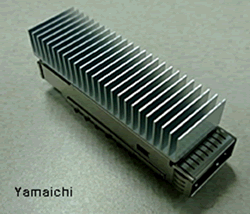 The CFP pluggable modular connector has been undergoing rapid transformation from the original 148-position CFP to the current 56-position CFP4.
The CFP pluggable modular connector has been undergoing rapid transformation from the original 148-position CFP to the current 56-position CFP4.
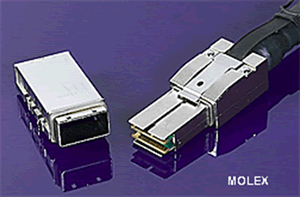 CXP is a pluggable copper and fiber interface that provides 12 10Gb/s links in a package a little larger than a QSFP+. CXP complies with the InfiniBand 12X QDR as well as 100 Gb Ethernet standards. Copper as well as active and passive fiber optic cables are available. CXP is often used as a high-capacity trunk link between racks and backplanes.
CXP is a pluggable copper and fiber interface that provides 12 10Gb/s links in a package a little larger than a QSFP+. CXP complies with the InfiniBand 12X QDR as well as 100 Gb Ethernet standards. Copper as well as active and passive fiber optic cables are available. CXP is often used as a high-capacity trunk link between racks and backplanes.
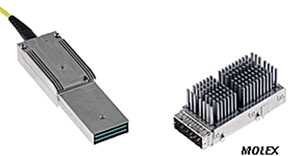 Molex announced a 400Gb/s (16x25Gb) pluggable interface compliant with the CDFP MSA. The zCD active optical cable transmits 28Gb/s over 16 bi-directional channels, which enable the design of line cards with up to five terabytes of I/O.
Molex announced a 400Gb/s (16x25Gb) pluggable interface compliant with the CDFP MSA. The zCD active optical cable transmits 28Gb/s over 16 bi-directional channels, which enable the design of line cards with up to five terabytes of I/O.
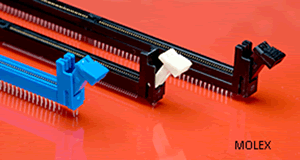 The race for faster access to greater amounts of memory is reflected in the growth of DDR4 memory modules that offer higher data density as well as faster transfer rates.
The race for faster access to greater amounts of memory is reflected in the growth of DDR4 memory modules that offer higher data density as well as faster transfer rates.
We are starting to see a host of new product categories that will dictate interconnect requirements over the next few years. Some of the fastest growing product categories include:
- 3D printers used in a wide variety of applications from human implants and aircraft parts to consumer toys.
- Unmanned aerial vehicles (UAVs) are morphing from military weapons into commercial and consumer drones that can assist in timberland analysis, search and rescue missions, and potentially delivery of small packages.
- Wireless communication technologies including Wi-Fi, Bluetooth, and ZigBee teamed with an expanding universe of sensors are opening new applications in process control, security, and infrastructure management. TE Connectivity recently acquired Measurement Specialties Inc. and American Sensor Technologies to gain access to their extensive lines of pressure, vibration, force, temperature, humidity, ultrasonic, position, and fluid sensors.
- Solid state memory is expanding into new applications where access time and reliability is critical, while traditional rotating memory continues to find ways to increase data density at a lower cost.
- Wearable electronics that feature integrated communication, information, and monitoring capabilities introduce entirely new weight, environmental resistance, and power requirements in medical and consumer applications.
- Robotic devices are moving closer to consumer applications that range from household duties to human companionship.
- In the short term, laptop and even desktop computers have begun to experience a resurgence of sales as users find doing real work on a tablet is not particularly efficient.
It is hard to predict the long-term impact these new products and technologies will have on the connector industry, but it is a fair bet that fiber optics will continue to displace copper interfaces in select high-speed applications, especially as we push toward 100Gb/s links. Wireless interconnects of all types will replace standard I/O connectors on mobile devices, an increasing segment of the electronic device universe. Demand for devices that are smaller, faster, consume less power, and are cheaper will continue to drive the industry.
- Optics Outpace Copper at OFC 2024 - April 16, 2024
- Digital Lighting Enhances your Theatrical Experience - March 5, 2024
- DesignCon 2024 in Review - February 13, 2024
